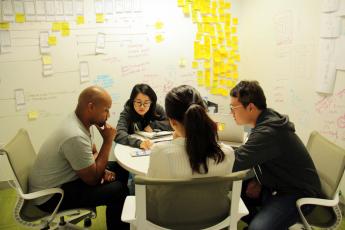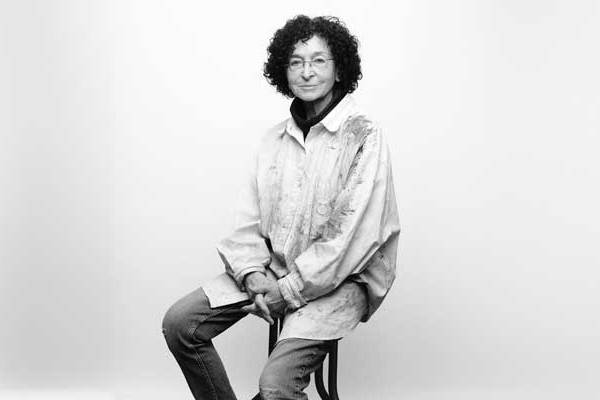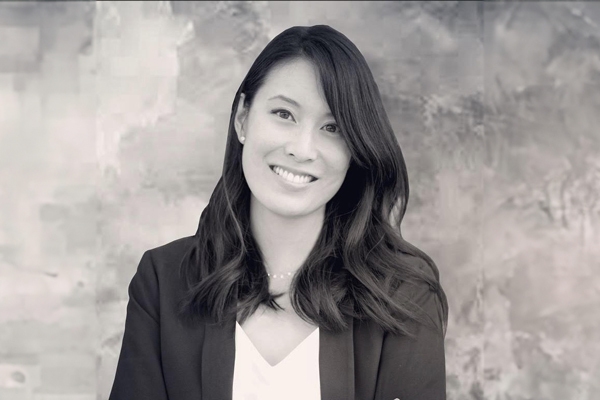Kitty He’s atypical career path to user experience design is actually pretty typical for UX professionals. That’s because the discipline is still relatively new—with it just getting a name from Don Norman in the 1990s—and also because the field is red-hot right now and attracting talent from other disciplines.
Adapting to a New Educational Culture
Kitty’s first exposure to the United States was during a summer exchange student program when she was in high school. She visited UC San Diego and fell in love with the campus and its resources. The beaches and beautiful scenery were additional pluses in her eyes!
Her journey toward that dream began at De Anza College. Kitty had realized that the leap from China to UC San Diego might be too great, and De Anza offered smaller class sizes and ESL classes that would help her transition to the American higher-education system. After completing a two-year A.A. degree in business with a CIS emphasis, she did eventually make it to UCSD, where she completed her undergraduate degree in management science. That degree gave her a higher level of technical expertise with data analytics and business thinking, skills that would come in handy for her transition to a UX career.
Continuing to Refine Her Career Goals
Even while carrying a heavy course load at college, Kitty realized the importance of giving back. Her community involvement in turn led to her discovering her next career. While volunteering to help refugees fill out their income tax forms with the International Rescue Committee, Kitty realized the vital importance of technical skills, and resolved to gain the skills to expand the reach of communities who traditionally have not had access to the digital resources and information needed to successfully navigate modern life. Kitty is someone who strives to help and empathize with others and she decided to match her career to these traits. In fact, as Kitty puts it, “[t]hese qualities deeply resonate with the nature of UX design and motivate me to learn how to harness empathy to better understand people’s needs and create goods to improve lives.”

Kitty was on BART when she saw an ad for UC Berkeley Extension. She realized the classes here could help her refine her career skills, and so she enrolled in the Professional Program in UX Design.
Given Kitty’s collaborative and empathetic nature, it’s no surprise that her favorite course and project involved teamwork. She and her fellow students worked on a client-directed project in her User-Interface (UI) Design course. Her team spent three months designing a web application for instructors to edit their class and profile information. That real-world experience left a deep impression on Kitty. As she says, the class assignment “focuses not only on theoretical knowledge but also practical experience, which helps fortify our hard and soft skills in readiness for entering the workplace.”
Meeting Difficult Tasks Head On
The program was arduous, but Kitty applied her experience and her resolve to conquer any problems she encountered. She says that developing her portfolio was “the most challenging moment in the program. I spent a lot of time in creating and interacting with my portfolio. The most difficult parts were ‘storytelling’ the design process of each project.” She has advice for students who are contemplating taking the program. It helped her perfect her portfolio and gain the admiration of the program director.
Kitty’s Top Tips for Polishing a Portfolio
- Start preparing your portfolio early. Give yourself enough time to study how to make an online UX design portfolio from online resources.
- Creating a portfolio can be daunting, so, document your ideas and deliverables regularly as you work on a project. This habit can help you save time to recall the details of your projects as you start creating your portfolio.
- Collect helpful tips, articles, and visual styling resources to build your portfolio more efficiently.
- Attend UX/Product Design networking events or workshops to seek help from experienced designers for portfolio reviews and feedback.
First Career Successes

Kitty’s portfolio was so impressive that UX Program Director Ivan Trujillo recommended she apply for an internship at EPAM in San Francisco. As a strategic design intern, Kitty worked in a team of four designing a virtual mobile donation app, aimed at making it easier for Bay Area residents to donate old kitchen cabinets to Habitat for Humanity in Oakland, CA. As Kitty relates it, “When I first heard about this project, I was captivated by its vision statement and the ambitions our clients have to reduce landfill waste using emerging technologies.”
During this project, Kitty learned to plan and conduct user research, create UX deliverables and generate UI designs. One of the biggest challenges she faced was learning how to address large-scale problems interacting with various variables and a multiplicity of stakeholders. While designing the user flows for the app, the team was also encouraged to think more broadly about how they could alter users’ behaviors to produce less waste and minimize their personal ecological impact. After successfully completing the project, Kitty acquired the practical design and research skills needed to perform effective designs, as well as the communication and presentation expertise required to pitch ideas and prototypes to stakeholders.
Social Benefits to Digital Design
Kitty sees this experience as a watershed moment in her UX career. “Through participating in this design process,” she states, “I saw that the power of design can go beyond just fulfilling users’ needs. It can promote social justice, sustainability and inclusiveness. This experience reminds me that as a designer, we should be aware of our responsibilities to be the voice of the user as well as taking into account broader, longer-term consequences in our designs.”
Continuing On After Continuing Education
To continue utilizing design for a sense of purpose to help people solve more complex problems, Kitty decided to pursue advanced education in human-computer interaction (HCI). Currently, she is an admitted Master of Human-Computer Interaction + Design student at the University of Washington.
See how far your career aspirations can go with the Professional Program in UX Design.



